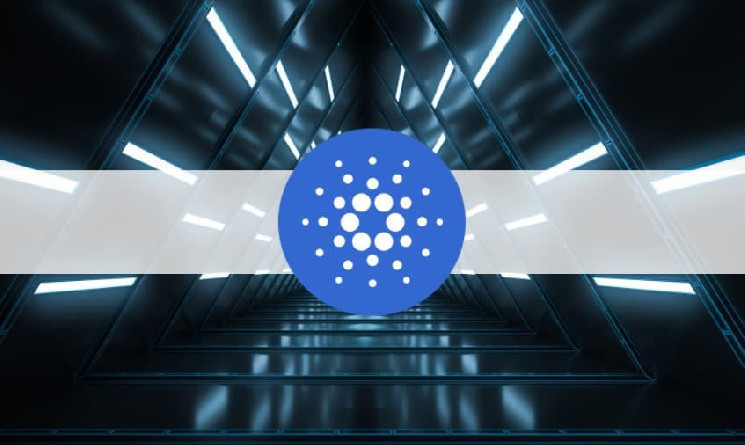Cardano is one of the largest cryptocurrency projects by means of total market capitalization but also in terms of developers working on it.
In essence, it’s a proof-of-stake blockchain network that’s being developed into a decentralized application development platform with a multi-asset ledger, as well as verifiable smart contracts.
One of the main talking points of Cardano has always been the team’s peer-reviewed academic research and public approach, where all the technical specifications that underpin the network are published publicly, making all of the team’s development activity visible.
With that in mind, a commonly asked question is how close is Cardano to being fully developed. To answer this, we need to take a closer look at its roadmap – which is divided in five eras – Byron, Shelley, Goguen, Basho, and Voltaire.
Let’s take a closer look at each one of them.

The Byron Era
As mentioned, Cardano makes use of a peer-review and research model of formal development.
It all started back in 2015, but it wasn’t for another two years that the project saw the light of day and, thus, in September 2017, the Byron era started.
This is the foundation period for Cardano, and not many people know that its first iteration allowed users to buy and sell ADA tokens on a federated network that was running on the Ouroboros consensus protocol.
Quick fact: ADA is named after the revolutionary programmer Ada Lovelace.
Cardano’s team takes pride in what they claim to be the first proof-of-stake protocol “created on the basis of academic research, with a mathematically-proven level of security.”
Some of the papers published during this particular era include:
- SCRAPE: Scalable Randomness Attested by Public Entities
- Ouroboros: A Provably Secure Proof-of-Stake Blockchain Protocol
- Specification of the Blockchain Layer
Meanwhile, the scope of work for the Byron era included the development of:
- ADA Cryptocurrency
- Cardano’s block explorer
- Daedalus wallet
- Ouroboros consensus protocol
- Paper Wallets and so forth.
The Shelley Era
The transition to Cardano’s second epoch was designed to achieve low-risk progress without any interruptions of service.
This is when more nodes switched towards being run by the community in a bid to achieve further decentralization, greater security, and robustness. During this period, some of the developments for Cardano included:
- Consensus incentives and fees
- Stake pools
- Delegation certificates
- Ouroboros Praos, Genesis, and BFT
- Delegation in Daedalus
- Shorter Addresses and so forth.
Meanwhile, some of the papers published during the Shelley era include:
- Ouroboros Praos: An Adaptively-Secure, Semi-synchronous Proof-of-Stake Blockchain
- Ouroboros Genesis: Composable Proof-of-Stake Blockchains with Dynamic Availability
- Stake-Bleeding Attacks on Proof-of-Stake Blockchains
In essence, the Shelley era represented the natural maturation of the network, and that’s when it became more useful and rewarding for its users. That’s why it’s also mainly focused on decentralization.
The Goguen Era
The Goguen era is the one where we saw smart contracts going live on Cardano for the very first time. It represents a massive step in the network’s history and a huge achievement for the team behind it.
On September 13th, 2021, the team deployed the Alonzo upgrade – a historic feat in the project’s roadmap, allowing users to build decentralized applications on the mainnet for the first time since the network was live.
Besides adding this functionality, however, the Goguen era is also designed to improve the core of Cardano’s offerings. Most significantly, this is the addition of the multi-currency ledger that’s expected to extend the network’s usefulness, allowing users to create new tokens that are supported natively.
This would allow the creation of both fungible and non-fungible tokens, as well as the creation of new cryptocurrencies and the overall tokenization of many other assets.
Some of the papers published during the Goguen era include:
- Towards a Smart Contract-based, Decentralized, Public-Key Infrastructure
Meanwhile, some of the major developments are:
- Plutus and Plutus Core
- Smart Contracts Integration
- Multi-Currency Ledger
This is the era Cardano is at the time of writing this guide.

The Basho Era
The next era for Cardano will be all about scaling and optimization. If the previous eras were focused on functionality and decentralization, this one would be about improving the underpinning performance of the network in a bid to better support its growth and adoption.
Perhaps the main development of Basho will be the integration of sidechains. These will be new blockchains that will be fully interoperable with the mainnet of Cardano and would bring serious potential to extend the capabilities of the underlying network.
Sidechains can also be used as a mechanism to shard and offload work from the main chain to increase its broader capacity. They can also be used to introduce certain experimental features without having to affect the security of the main network.
The Voltaire Era
This is the last in line for Cardano’s roadmap, and it’s designed to provide the final pieces necessary for the network to become a self-sustaining one. The focus is on governance and:
“… it will require not only the distributed infrastructure introduced during the Shelley era but also the capacity to be maintained and improved over time in a decentralized way.”
This is the time when community members will be able to present network improvement protocols, vote on them, and leverage existing staking and delegation processes.
During the Voltaire era, the project will also see the addition of a treasury system whereby a fraction of transaction fees will be pooled to make sure there are enough funds necessary for the development activities undertaken after the voting process.
 cryptopotato.com
cryptopotato.com